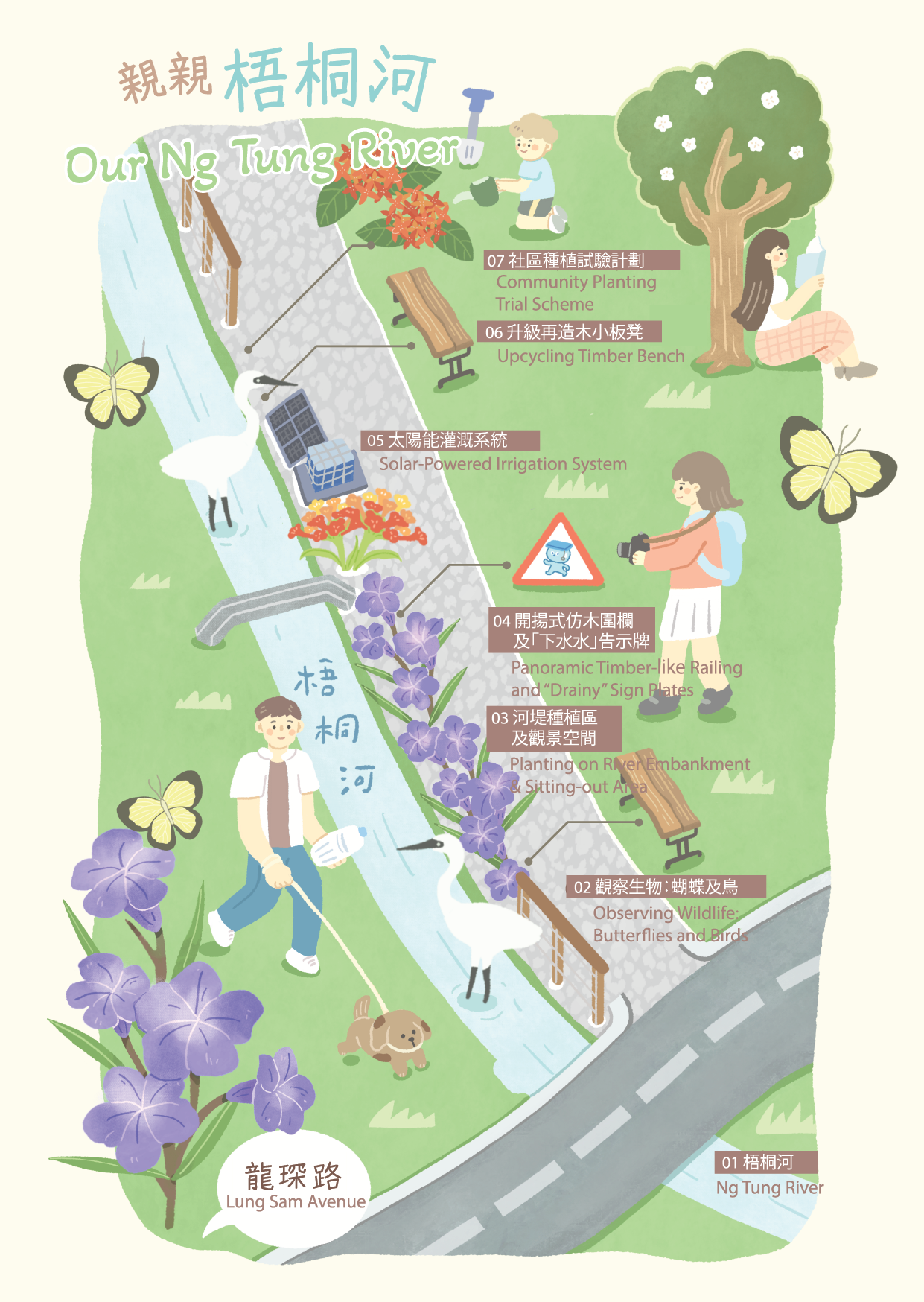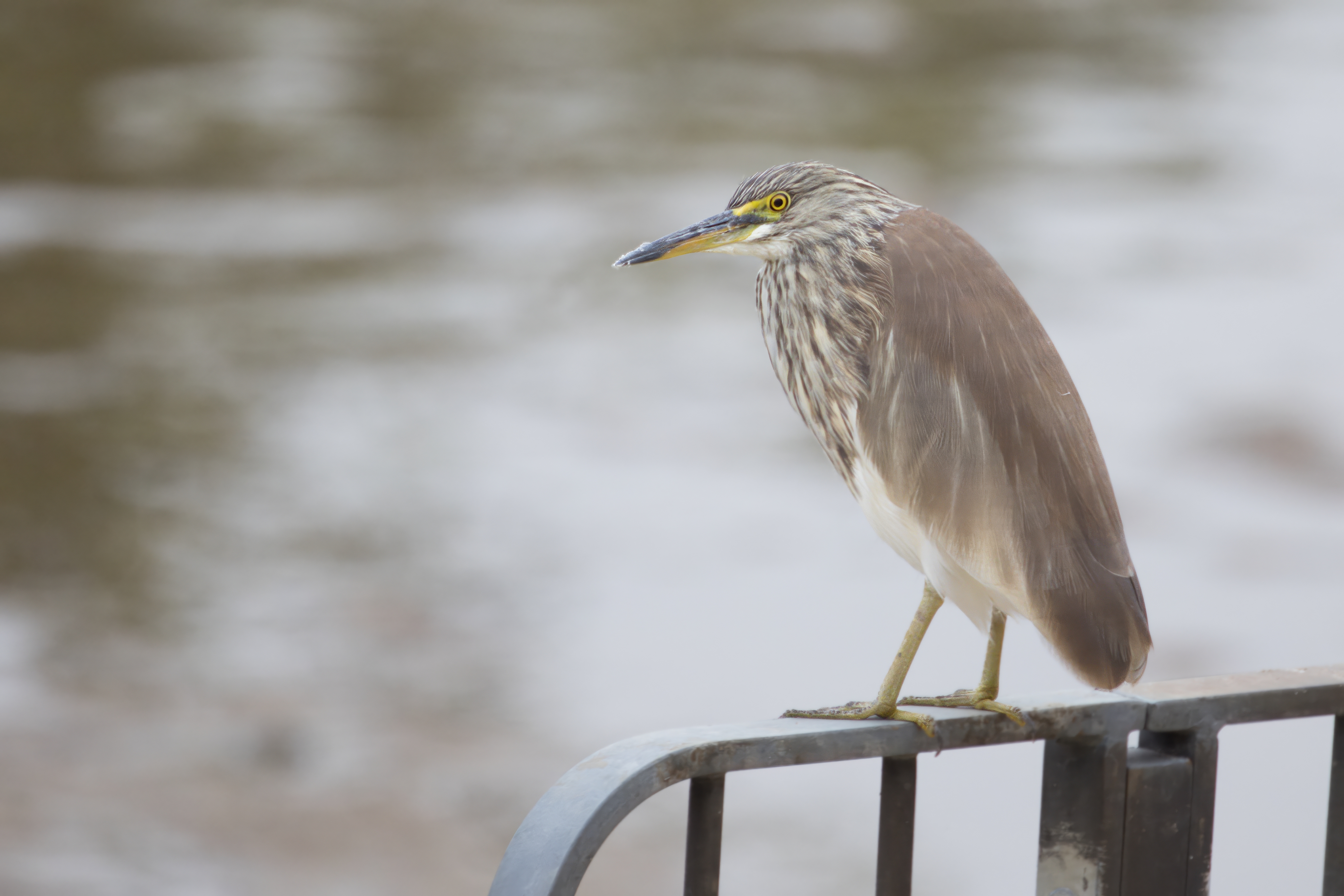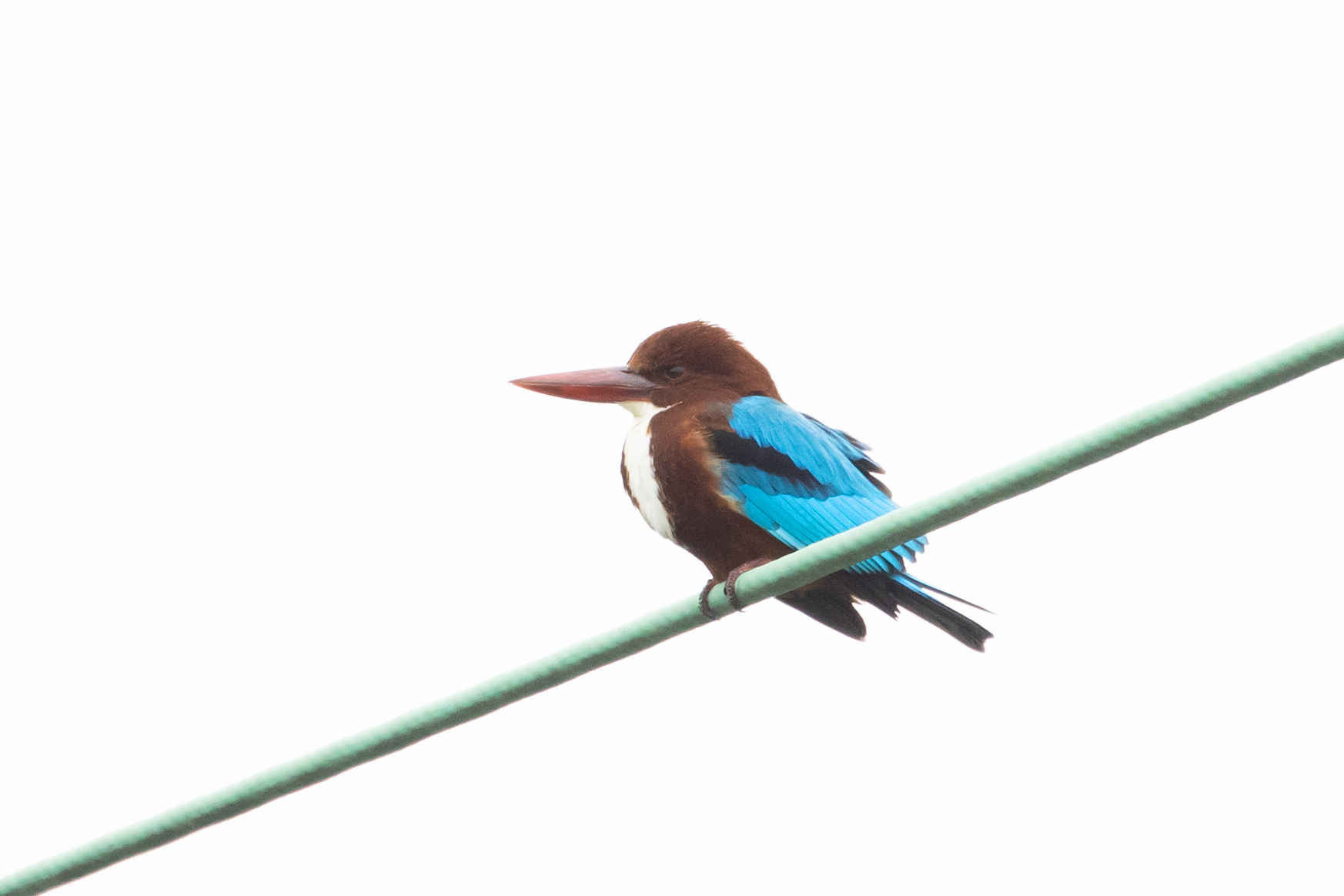Ng Tung River Beautification Works
Ng Tung River is the largest channel in the North District of Hong Kong with a total length of approximately 49 kilometres
| Transportation |
|---|
|
From Exit A4 of Sheung Shui MTR station, walk along Lung Sum Avenue for about 16 minutes to reach Ng Tung River. |
The Drainage Services Department (DSD) has been promoting the concept of "Rivers in the City". It dovetails with the concept of "Blue-Green Infrastructure" that underlines the revitalisation of water bodies to form a novel strategy for existing and future river engineering projects. To take forward the concept of "Rivers in the City", elements of river revitalisation have been incorporated into river improvement works to provide high-quality public areas, strengthen river-community connection, and promote a water-friendly culture.
Ng Tung River, originally named Fung Kai, is the largest channel in the North District of Hong Kong with a total length of approximately 49 kilometres and a catchment area of 43 square kilometres. Ng Tung River originates from Robin's Nest and Wong Leng with tributaries distributed in areas such as Sheung Shui, Fanling, and Lung Yeuk Tau. It merges with Shek Sheung River and Sheung Yue River near Fu Tei Au, and connects to Shenzhen River at Lo Wu for discharging into Deep Bay.
DSD carries out routine maintenance works at Ng Tung River, including removal of debris, grass cutting, and desilting, so as to maintain its drainage capacity. To promote resource recycling and to support sustainable development, a portion of yard waste generated from routine maintenance works is sent to composting facilities for conversion into compost material for general gardening purposes.

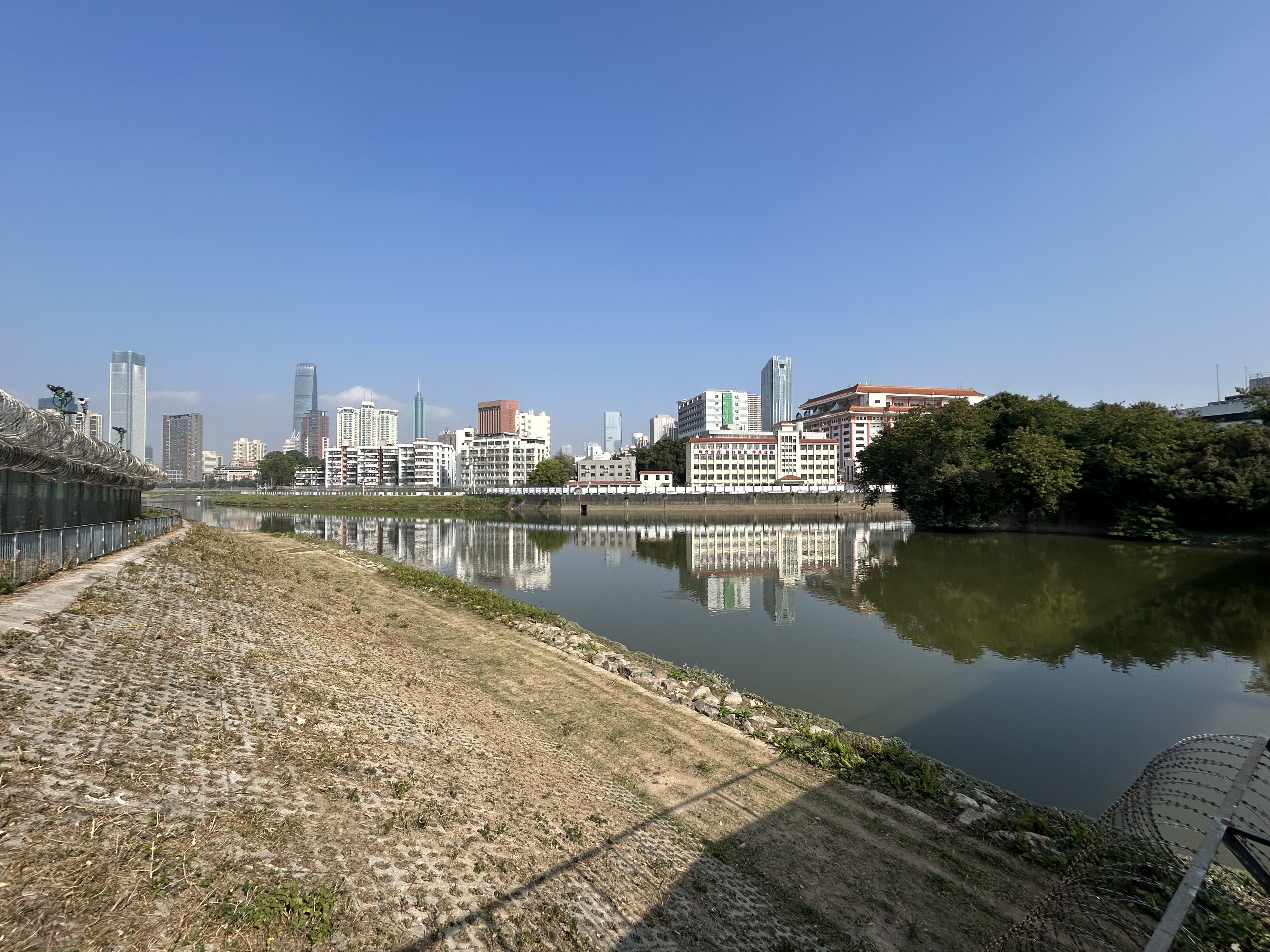
Ng Tung River is situated in a The confluence of Ng Tung River
scenic and tranquil environment and Shenzhen River
Both Ruellia coerulea and Trailing Lantana are plants that provide abundant nectar, attracting butterflies, bees, moths and other insects to enjoy. Trailing Lantana blooms almost year-round and serves as the food plant for the larvae of Zizula hylax, while Ruellia coerulea serves as that for the larvae of Junonia lemonias. As most butterfly larvae only feed on specific plants, planting food plants can attract these butterflies to lay their eggs here.
You can also spot water-loving birds such as Little Egret, Great Egret, Great Cormorant, and White-throated Kingfisher along Ng Tung River. Black Kite often soars above the river and occasionally dip down to catch fish form the water. Little Egret and Great Egret have white feathers all over their bodies, with Little Egret having a black bill and yellow toes, while Great Egret has a yellow bill, black toes and characteristic S-shaped neck. Great Cormorant, with its black feathers and jewel-like green eyes, is a skilled fishing diver and sometimes can be seen drying its wings after diving.
In order to beautify the river environment, DSD has planted over 18,000 plants on both sides of the river (13,000 of which are Ruellia coerulea). In particular, a portion of the footpath along the river has been developed into a "Ruellia coerulea Footpath", which is adorned with purple-blue flowers during the blooming season for visitors' enjoyment.
Ruellia coerulea blooms from summer to autumn, with the peak season being summer. It thrives in warm climates and abundant sunlight. It has an upright plant type, reaching a height of about 30 to 70 centimetres. The campanulate flower is blue to purple. One of its characteristics is that the flowers bloom in the morning and wither in the evening.
Trailing Lantana (Lantana montevidensis), which is an evergreen, trailing shrub, belonging to the family Verbenaceae and native to tropical America, have been planted along the river banks. It blooms almost year-round in Hong Kong. From a distance, it appears as a cluster of purple flowers, while looking closer, it is composed of numerous funnel-shaped florets. Additionally, the branches and leaves of Trailing Lantana have a strong scent, earning it the nickname "Stinky Gold Phoenix" (鋪地臭金鳳).

"Ruellia coerulea Footpath" Sitting-out area on the riverside
along Ng Tung River
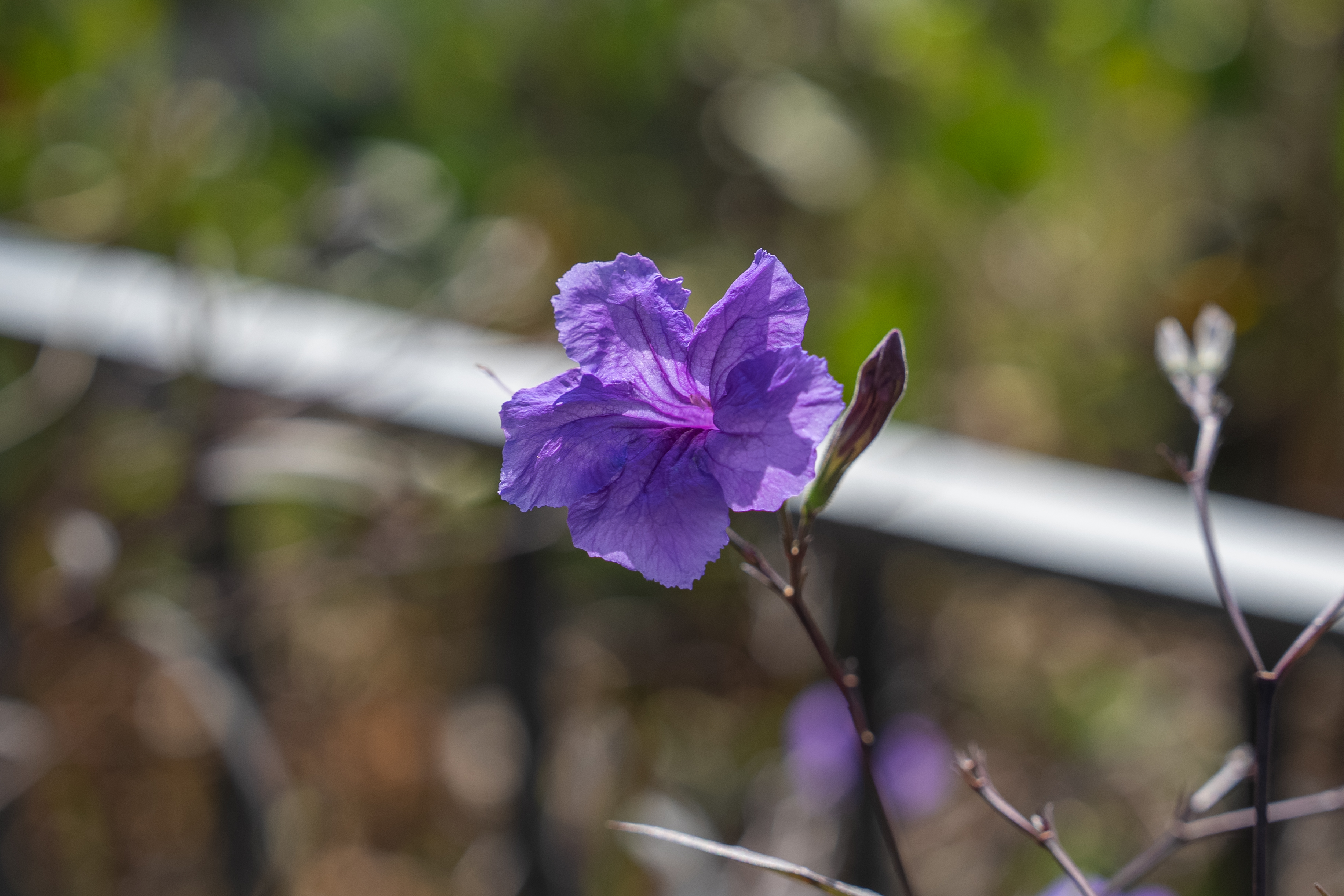
Trailing Lantana (Lantana montevidensis) Ruellia coerulea
DSD has replaced approximately 250 metres of existing railing along the riverside with the newly-designed one which features the use of slender horizontal metal wires and metal stanchions wrapped in timber claddings. This design not only fulfils the purpose of fall protection but also seamlessly blends the railing into the surrounding environment to minimise its visual impact, which allows people to better enjoy the natural scenery of Ng Tung River. Additionally, some sections of the new railing are provided with depressions on its top rails for holding beverages, which attracts people to stay longer at the riverside and to get close to the water bodies.
In addition, DSD has also replaced the existing sign plates and chainage marker plates with the plates adopting the theme of "Drainy". The "Drainy" plates enhance the effectiveness of delivering safety and other messages to the public through their vibrant and lively designs.

"Drainy" sign plates With its minimalist style, the railing
offers an expansive view, allowing
people to admire the beautiful
landscape along Ng Tung River
"Drainy" chainage marker plates
To improve the efficiency of routine maintenance of plants, DSD has installed a solar-powered irrigation system at Ng Tung River. The system mainly comprises 12 solar panels laid on the river embankment, water pumps and driplines. The system extracts river water regularly for the irrigation of plants on the river embankment.
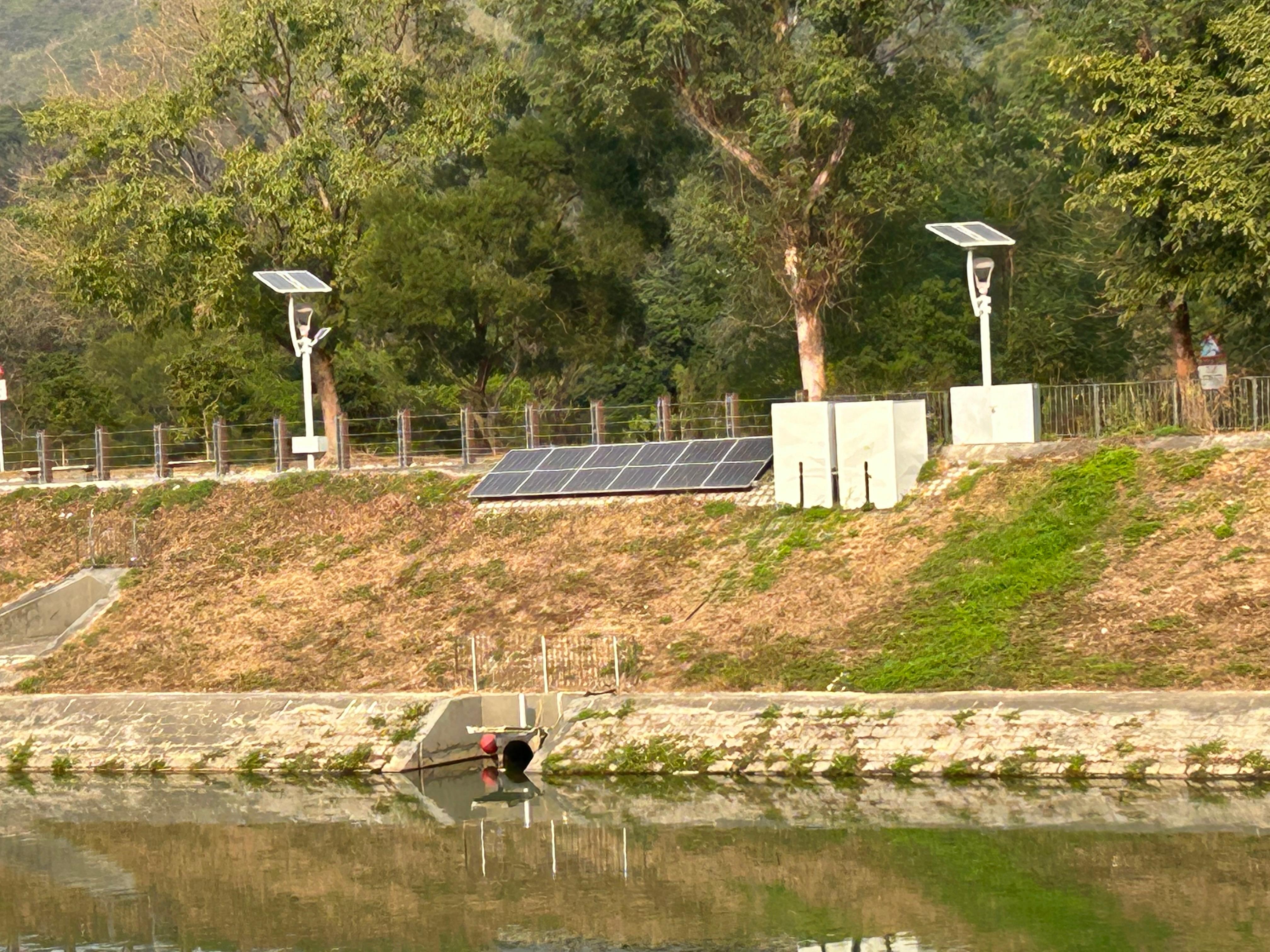

Solar-powered irrigation system at Ng Tung River
Four benches made from recycled timber, such as trees that fell during typhoons, have been set up along Ng Tung River. After undergoing a series of treatment processes such as drying and cutting, the recycled timber was installed on metal frames to form benches. Each bench is
laser-engraved with the name of the timber, such as Taiwan Acacia and Lemon-scented Gum.
"The Drainy Warriors: Rivers in the City" orienteering and planting activity, organised by DSD, was held on 6 and 13 January 2024. Approximately 100 Ixora chinensis seedlings (commonly known as "dragon boat flower" in Chinese) were planted jointly by DSD and local youth along the river embankment during the activity. This activity symbolised the collaborative effort between DSD and the local community in creating a more picturesque riverside at Ng Tung River for public enjoyment.
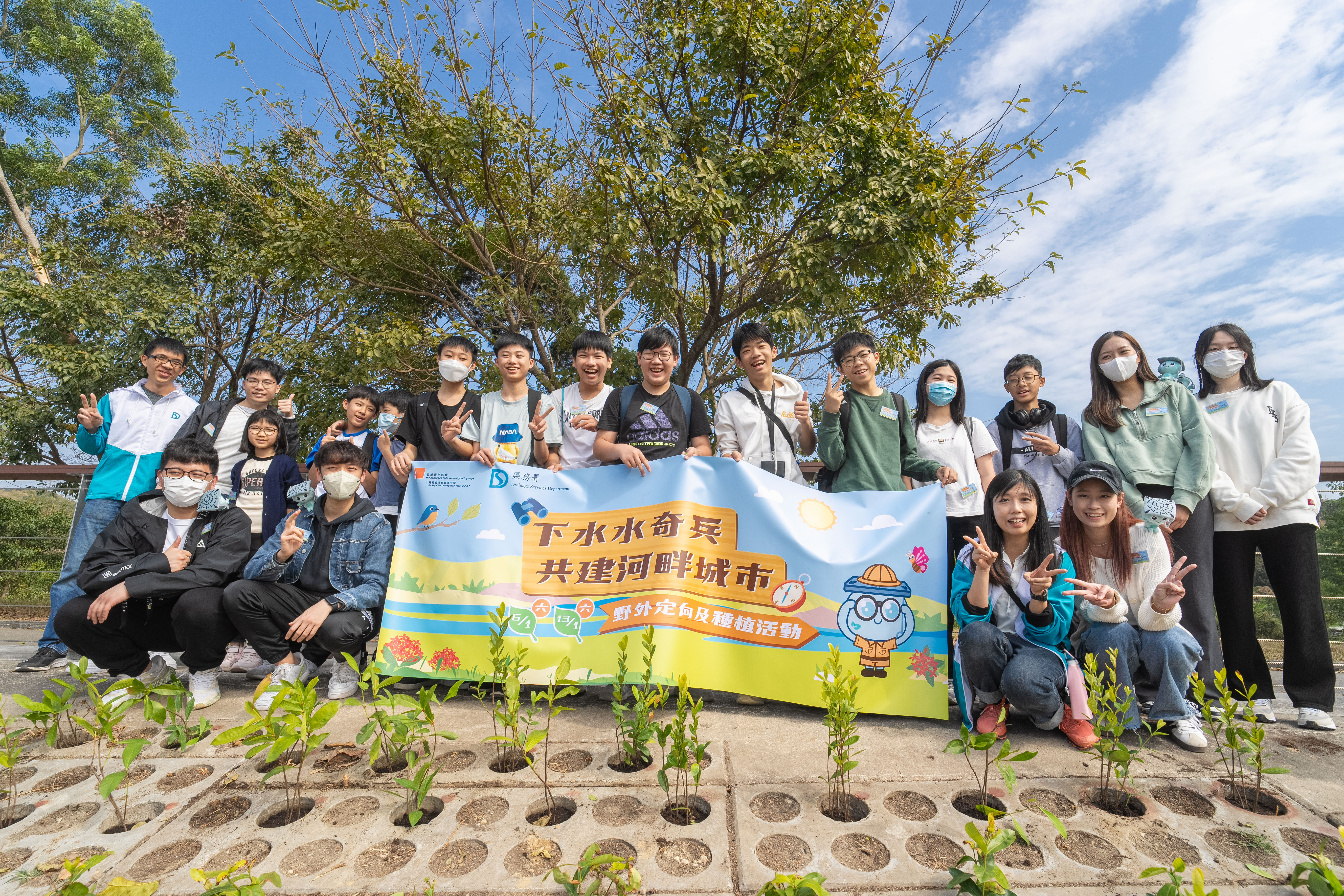
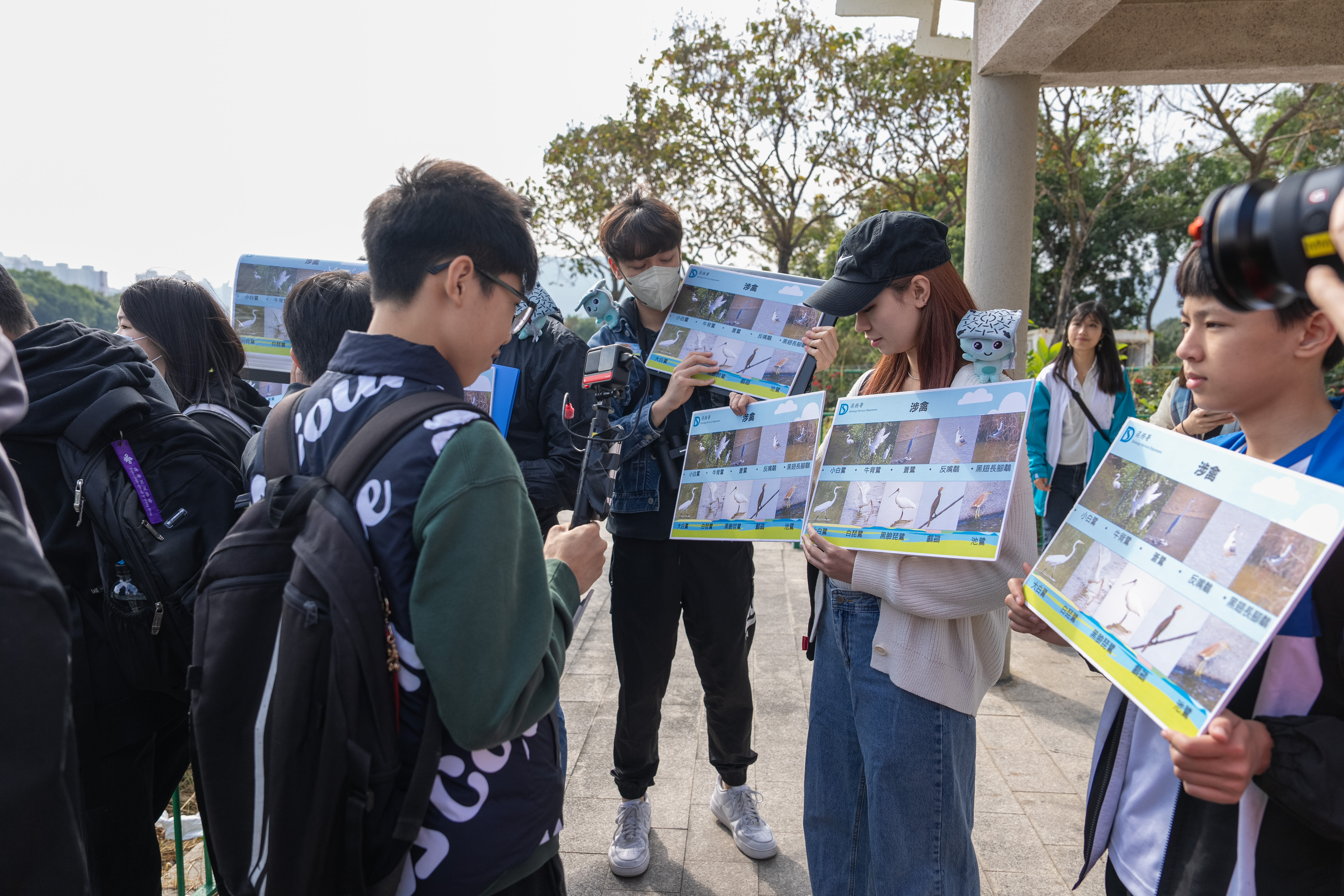
DSD organised a two-day University students were invited to
"The Drainy Warriors: Rivers in the City" serve as eco-guides who shared
orienteering and planting activity knowledge of planting with the
participants
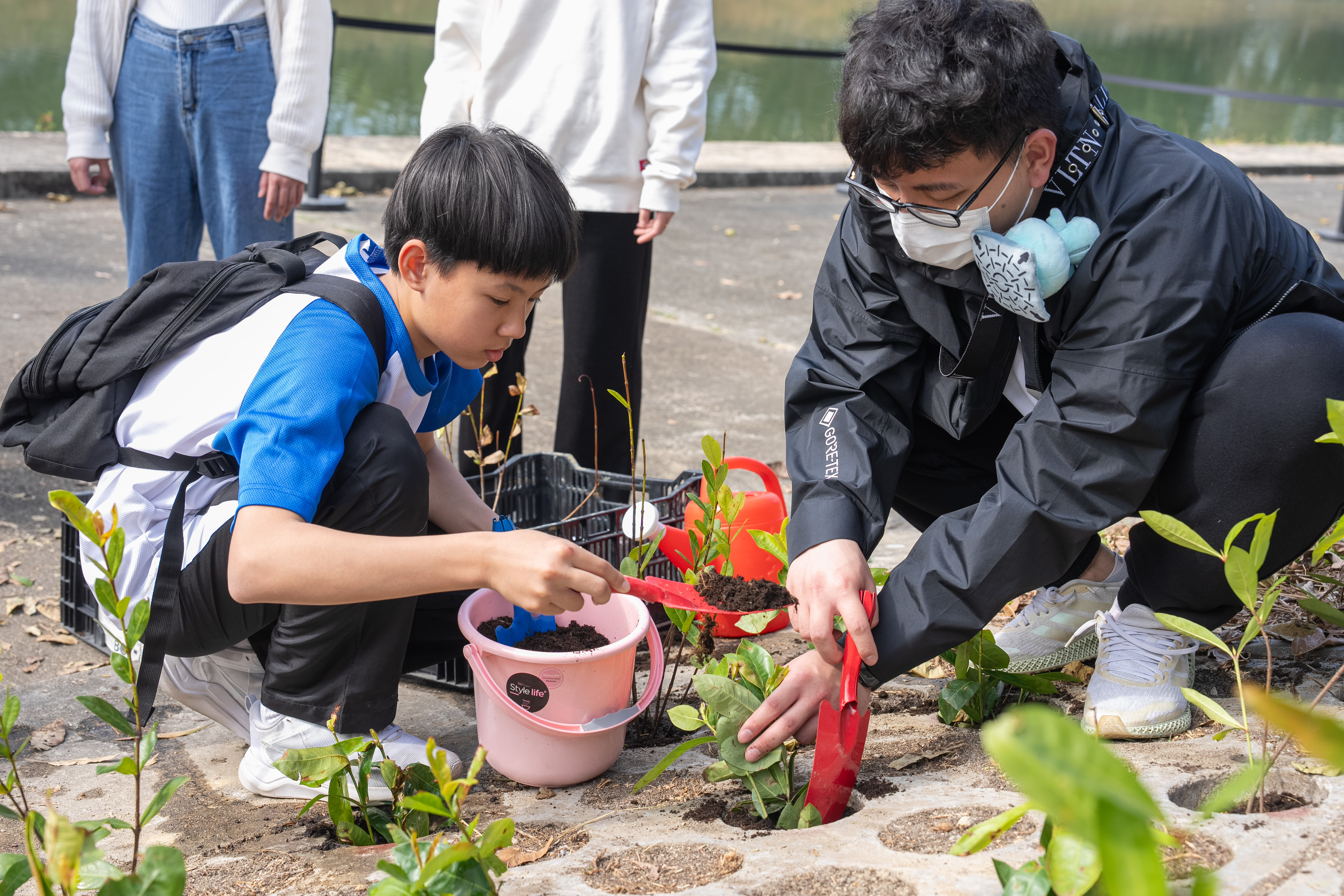
Local youth participated in the
planting activity

